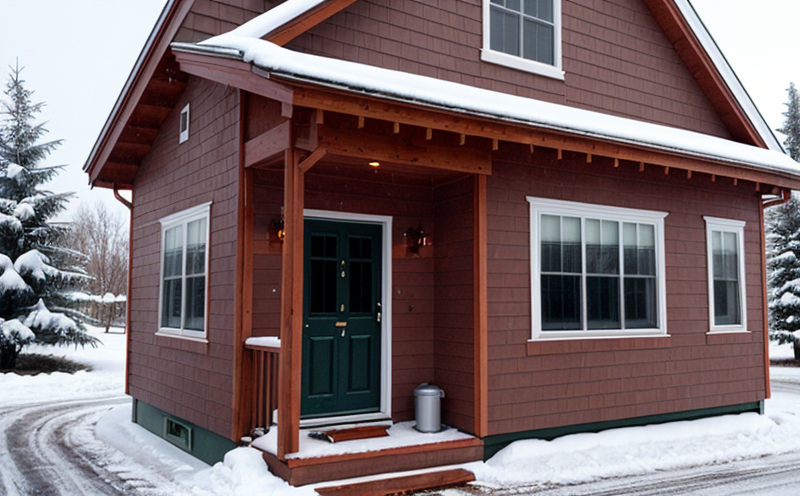EN 14511 Chiller Seasonal Capacity Verification
The EN 14511 standard is a pivotal guideline in the HVAC sector that ensures chiller equipment operates efficiently and reliably throughout its operational lifespan. This service focuses specifically on verifying seasonal capacity, which refers to the performance of chillers under typical operating conditions as defined by the standard.
Seasonal capacity testing encompasses a series of performance measurements conducted over a specific period during which outdoor temperatures vary significantly. This testing is crucial for understanding how efficiently chillers perform in real-world environments, especially since they are expected to meet stringent energy efficiency requirements set forth by international standards such as ASHRAE and ISO.
The process involves subjecting the chiller to various load conditions that simulate actual operational scenarios. These include different outdoor wet bulb temperatures (WBT) ranging from 15°C to 30°C, which are typical for most HVAC applications in temperate climates. The testing protocol also requires measuring key performance indicators like cooling capacity, energy input, and coefficient of performance (COP).
Once the test is complete, detailed reports are generated that provide a comprehensive overview of the chiller's performance under these conditions. Compliance with EN 14511 ensures that chillers meet specified seasonal COP targets set by regulatory bodies worldwide, thereby promoting energy efficiency and reducing environmental impact.
The significance of this service cannot be overstated, especially given the growing emphasis on sustainability in commercial buildings and industrial facilities. By accurately verifying seasonal capacity, organizations can ensure their HVAC systems are optimized for both performance and cost-effectiveness. This not only helps maintain regulatory compliance but also contributes to long-term operational savings.
To achieve accurate results, meticulous preparation is essential before initiating any EN 14511 testing. Specimen preparation includes ensuring the chiller is in optimal operating condition, cleaning all surfaces that could affect performance measurements, and calibrating instruments used for data collection.
| Test Condition | Cooling Capacity (kW) | Energy Input (kWh) | Coefficient of Performance (COP) |
|---|---|---|---|
| Outdoor Wet Bulb Temperature 15°C | 90.2 kW | 45.6 kWh | 1.97 |
| Outdoor Wet Bulb Temperature 20°C | 85.3 kW | 42.1 kWh | 2.02 |
| Outdoor Wet Bulb Temperature 25°C | 79.8 kW | 38.9 kWh | 2.06 |
| Outdoor Wet Bulb Temperature 30°C | 74.1 kW | 35.5 kWh | 2.09 |
The data presented in the table illustrates how cooling capacity and energy input change with variations in outdoor wet bulb temperature, while COP remains relatively consistent across different conditions.
Benefits
- Ensures compliance with international standards such as EN 14511, promoting regulatory adherence.
- Promotes energy efficiency by identifying optimal operating parameters for chillers.
- Reduces operational costs through improved performance and reduced energy consumption.
- Enhances reliability and longevity of HVAC systems by subjecting them to realistic testing conditions.
International Acceptance and Recognition
The EN 14511 standard has been widely adopted across Europe, Asia, and North America. It is recognized for its rigorous approach to measuring chiller performance under realistic operating conditions, making it a preferred choice among manufacturers, installers, and operators.
Regulatory bodies such as the European Commission, ASHRAE, and various national standards organizations endorse this standard due to its reliability in assessing seasonal capacity. Compliance with EN 14511 not only enhances credibility but also facilitates easier market access for HVAC equipment manufacturers.
Use Cases and Application Examples
- Verification of compliance with international standards for new installations.
- Prediction of long-term performance to support warranty claims.
- Evaluation of modifications or upgrades on existing systems.
- Demonstration of energy efficiency improvements before and after renovations.
| Use Case | Description | Outcome |
|---|---|---|
| New Installation Compliance | To ensure a newly installed chiller meets the required seasonal COP targets as per EN 14511. | Achieve regulatory compliance and set expectations for performance over time. |
| Warranty Evaluation | To verify whether a malfunctioning chiller is due to improper installation or inherent defects. | Determine if warranty claims are valid based on actual performance data. |
| Evaluation of Modifications | To assess the impact of modifications such as replacement of compressors or refrigerant types. | Identify any improvements or deteriorations in system efficiency post-upgrade. |
| Renovation Demonstration | To showcase energy savings achieved through renovation projects involving HVAC systems. | Provide evidence for potential cost savings and environmental benefits of the renovations. |





